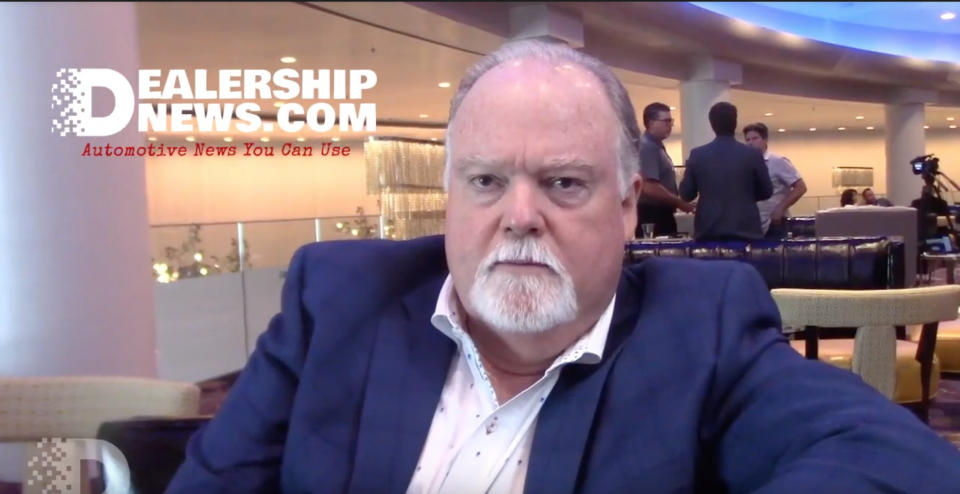Len Short Part 2 transcript powered by Sonix—the best video to text transcription service
Sonix is the best way to convert your video to text in 2019.
Kelly Kleinman:
Len tell us a little bit about your work now with OEMs. Seems to be a focus of your marketing. It’s going pretty well.
Len Short:
Yeah. So we’ve grown largely with our sales force through our relationships with large dealer groups who are early adopters, some smaller dealer groups who are sort of very smart and cutting edge. And, you know, the OEMs have a lot of resources to look into new technologies, highlight them, see what they do for their business. Our primary impact is is moving specific inventory. Right. And that’s an issue for the OEM. They print out cars. You know, the F-150 1 every 34.5 seconds comes in, you know, online. And they’ve seen they produce them in a very steady fashion, but they don’t sell through quite as evenly. Right. So you see, you know, fluctuations in sales up and down, but you see huge swings in days supply. And when you take that down to the regional or the dealer level, the swings get even more exaggerated. An OEM can’t sell what he’s producing unless it’s clearing out little ahead of us. And, you know, so we address that that issue at the dealer level and at the OEM level. What they’ve learned to do is use our product nationally, you know, to to address those kind of bunch ups in the supply chain in either in conjunction with an incentive, in support of an incentive program that they have or actually in advance of an incentive reducing the incentive dollars that they have to spend in the marketplace. So, you know, 10, 15 times a month, we’re launching campaigns for, you know, one in 10 set of, you know, inventory in the Midwest and another one in the Southeast. And, you know, they’re using it to manage that supply chain, you know, to their best advantage and optimize their cost, you know, moving that that inventory up until now.
Len Short:
The only real lever broker dealer and OEM have had is price to try to move inventory is a very costly way of clearing inventory. You know, OEMs are up to 4000 dollars on average per unit spending.
Len Short:
That’s a big chunk of gross margin on a unit. Dealers spend 30 million or 30 billion a quarter in retail discounts to move inventory. You know, and the problem is the old, you know, price elasticity of demand doesn’t work the same way as it used to. It does, but it tends to do is shift buyers from one unit to another, not really drive incremental demands with the very costly way of clearing out. You know what you have that’s aged on your lot and the older a piece of inventory gets, the harder it is to sell. Since the phenomenon that every dealer knows you’re doing, that you’re shifting the demand to those units, you’re starving the fresher units that are then going to go through the same cycle and they’ll become aged and then you’re discounting those. So, you know, smarter technology tools and the ability to micromanage demand per unit really makes a massive difference. You know, and not only the sales rates of those units, you know, reducing the days on a lot, but in the realized margin. Right. It’s a lot less expensive if you use technology to find incremental buyers than it is to use dollars to find incremental buyers. Right. To absorb costs on your life now. And, you know, so this is one of the inefficiency, inefficiencies that is developed in our business deals, complaining about compressing margins and the race to the bottom.
Len Short:
They’re looking at the guy next door seeing what he’s price. He’s looking back to see what they’re priced. And they’re sort of person themselves into, you know, into a business that there’s a retail margin left in. And, you know, I think what what makes me most excited about this, this business is, you know, how technology is going to change that. So far, the frankly, the Internet has been a big cost center for deals. It hasn’t spent a lot of money tooling up. You know, they’re spending a digital spending’s up 288% while, you know, margins are down 38%. So you that can’t sustain. You can’t be serving. It’s great for the digital guys, but it’s you know, it can’t be serving a customer base that is, you know, getting crushed on the net margins. We have to have technology find the efficiencies and we have to get a dividend from all of this investment in technology that we’ve made. That’s beginning to happen. I think that’s going to the story going forward. And, you know, if technology can bring every dealer another $300 a unit, you know, that’s going to change the whole dynamic of this business. And I think that’s, you know, that’s what we’re going to be seeing happen over the next year.
Len Short:
Thanks, Len.
Kelly Kleinman:
Thank you.
Quickly and accurately convert video to text with Sonix.
Sonix uses cutting-edge artificial intelligence to convert your be/R0yinAo7u6E files to text.
If you are looking for a great way to convert your be/R0yinAo7u6E to text,


